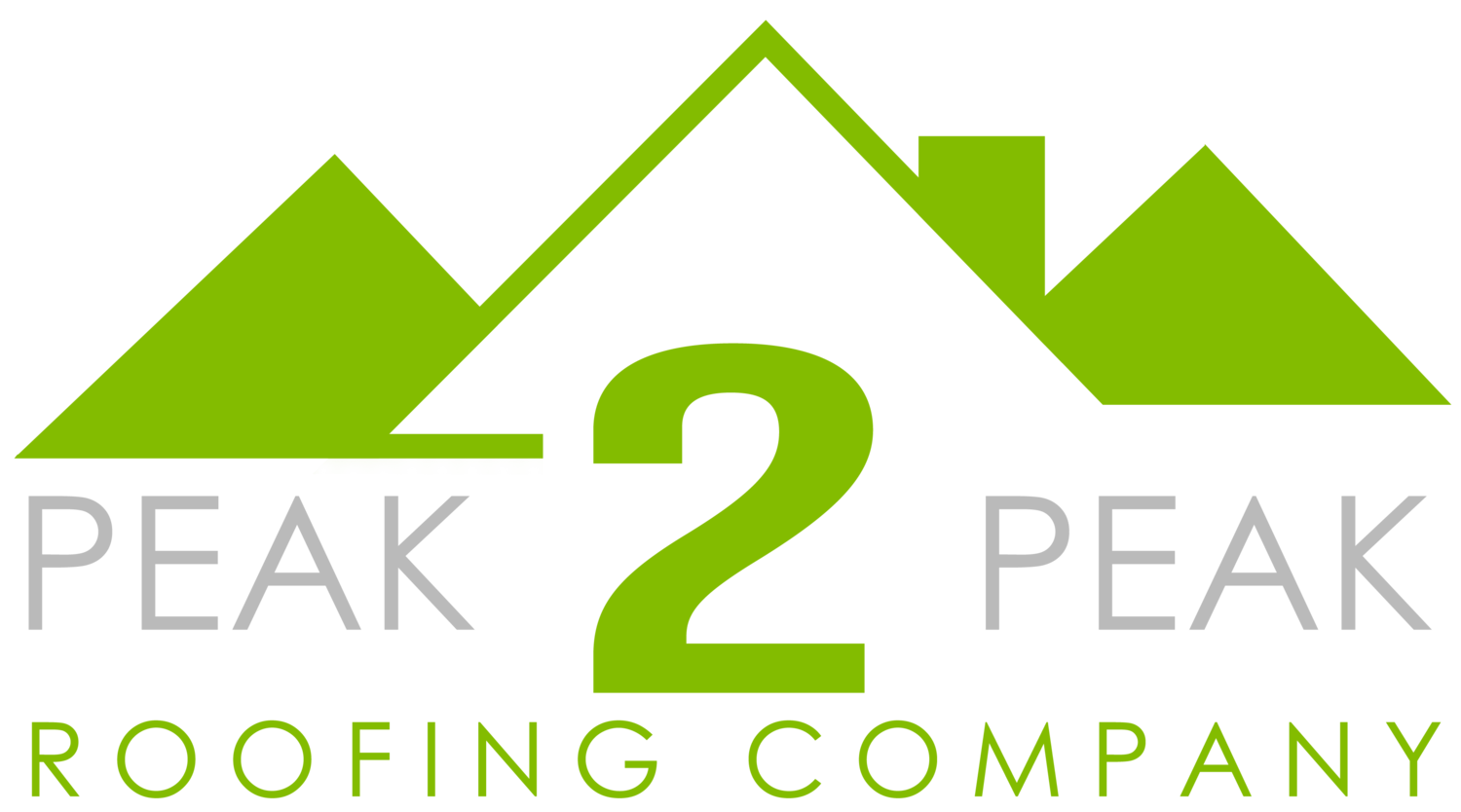Wind and Storm-Resistant Roofs | Peak 2 Peak Roofing
Did you know that high winds cause over $10 billion in property damage annually in the United States? This staggering statistic underscores the critical importance of having a wind-resistant roof to protect your home and family. At Peak 2 Peak Roofing, located at 7000 MO-371, St Joseph, MO 64504, we specialize in providing top-tier roofing solutions designed to withstand even the most severe weather conditions. Contact us today at 1-816-269-7894 or visit our website at https://www.peak2peakroofing.com/ to learn more about our services.
High winds can exert immense pressure on roofs, leading to uplift and potential structural damage. Even moderate winds of 45 mph can cause significant issues, especially if your roofing material isn't up to the challenge. At Peak 2 Peak Roofing, we use only the highest-quality materials and cutting-edge installation techniques to ensure your roof remains intact, no matter the weather. Our expertise in wind resistance is unmatched in the St Joseph area, and we're committed to providing our customers with the best possible protection for their homes.
A panoramic view of a sturdy, wind-resistant roof system featuring a combination of interlocking metal panels, reinforced shingles, and impact-resistant underlayment. The materials appear durable and expertly installed, with clean lines and a sleek, modern aesthetic. The lighting is a natural, golden hour glow, casting long shadows and highlighting the textural details of the roofing materials. The angle showcases the roof's steep pitch, designed to efficiently shed heavy winds and precipitation. In the background, a clear sky with wispy clouds suggests a calm, breezy day, emphasizing the roof's ability to withstand the elements.
Key Takeaways
High winds can cause significant damage to roofs, especially those with suboptimal materials or installation.
Peak 2 Peak Roofing offers expert solutions for wind-resistant roofs in St Joseph, MO.
Quality materials and proper installation are crucial for ensuring your roof withstands severe weather.
Our roofing systems are designed to handle hurricane-force winds and other extreme conditions.
Introduction to Wind and Storm-Resistant Roofs
High winds and severe weather events pose significant threats to homes, especially when it comes to roofing. Understanding the challenges and solutions is crucial for protecting your property.
Overview of Roofing Challenges in High Winds
Homeowners often face issues like wind uplift and debris impact during storms. Even materials like asphalt shingles and tiles have limitations. For instance, winds as low as 45 mph can cause damage, while hurricane-force winds exceed 150 mph, overwhelming many roofing systems.
Our Commitment to Superior Roofing in St. Joseph, MO
At Peak 2 Peak Roofing, we specialize in installing roofs designed to withstand extreme conditions. We use materials like dimensional shingles and metal roofing, which offer superior resistance. Our solutions are certified to handle high winds and hail, ensuring your home remains safe and secure.
Our expertise includes:
Advanced installation techniques
Hurricane-rated systems
Investing in a durable roof is essential for protecting your home from severe weather. Contact us today to explore your options and ensure your home is ready for any storm.
Understanding the Impact of High Wind Forces on Roofs
High winds and severe weather can cause significant damage to roofs, especially if the materials aren't designed to withstand such forces. The physics behind wind uplift reveals how air pressure differences can lift roofing materials, leading to structural compromise. This phenomenon is particularly destructive in areas where wind speeds are highest, such as the edges and corners of roofs.
Effects of Wind Uplift, Hail, and Debris Impact
Wind uplift can start with a small breach, allowing wind to get under the roofing material and causing progressive damage. Materials like asphalt shingles and clay tiles are more susceptible to wind-driven rain and debris, which can lead to costly repairs. In contrast, metal roofing has shown superior resistance due to its interlocking design, which distributes wind load effectively.
Real-World Examples and Case Studies
A notable case study from Hawaii demonstrated how metal roofs withstood hurricane-force winds of up to 120 mph without damage. This highlights the importance of choosing durable materials. Our approach at Peak 2 Peak Roofing considers local weather conditions to select optimal materials, ensuring homes remain secure even in severe storms.
Wind and storm-resistant roofs: Material & Certification Insights
Understanding the right materials and certifications is crucial for ensuring your roof can withstand severe weather. This section dives into the key certifications and how different materials perform under high winds and debris impact.
Key Certifications and Testing Standards
Certifications like UL2218, TAS-125, and UL1987 ensure materials meet high wind resistance standards. These tests evaluate water penetration, debris impact, and uplift resistance.
UL2218 tests impact resistance from hail and debris, with Class 4 being the highest rating.
TAS-125 assesses resistance to wind-driven rain and debris, simulating extreme weather conditions.
UL1987 evaluates uplift resistance, crucial for maintaining structural integrity during high winds.
Comparing Roofing Materials: Metal, Asphalt, Tile, and More
Different materials offer varying levels of durability and resistance:
Metal roofing is known for its superior durability and can withstand high winds and hail impact, making it a top option for storm resistance.
Asphalt shingles are cost-effective but offer limited wind resistance compared to other materials.
Clay tiles provide good wind performance and are a durable option, though heavier than asphalt.
Certifications like Class 4 impact resistance and high uplift ratings ensure materials like metal and clay tiles are optimal choices for withstanding severe weather. At Peak 2 Peak Roofing, we prioritize these certifications to guarantee your roof's durability and safety.
Best Practices in Installation and Maintenance for Durability
Proper installation is the cornerstone of a durable roof. Even the best materials can fail if not installed correctly. At Peak 2 Peak Roofing, we emphasize the importance of secure techniques and regular upkeep to ensure your roof withstands harsh weather.
Secure Installation Techniques and Fastener Options
To safeguard against uplift and impact, we use hurricane straps and correct fastener placement. These methods ensure your roof remains intact during storms.
Our installation includes high-quality fasteners and adhesives for optimal security.
Regular inspections help maintain your roof's resistance to extreme conditions.
Choosing the right materials, like metal or slate, is crucial. Our team at Peak 2 Peak Roofing ensures every installation meets local standards, protecting your home from hail and rain. By following best practices and maintaining your roof, you can enjoy lasting durability and security.
Conclusion
Protecting your home from wind damage and harsh weather requires a roofing system designed with strength and durability in mind. At Peak 2 Peak Roofing, our approach combines careful material selection and proven installation techniques to ensure long-term protection for your roof home.
We emphasize the importance of understanding wind pressure, uplift forces, and material durability. Real-world performance data, such as the case study where metal roofs withstood 120 mph winds in Hawaii, reinforces the value of proper roofing solutions. Our expertise ensures every roof home is built to withstand wind damage and pressure, even in hurricane-prone areas.
Investing in a roofing system with certified materials and advanced techniques means investing in strength and long-term performance. Contact us today to discover how our roofing systems offer unmatched durability and protection. Thank you for trusting Peak 2 Peak Roofing with your roofing needs. We remain committed to excellence and local service excellence in St. Joseph, MO.
FAQ
What is the best roofing material for high wind areas?
For homes in high wind or hurricane-prone areas, metal roofing and clay tile are top choices. Both materials offer superior wind resistance and can withstand wind speeds of up to 150 mph. Metal roofs are lightweight yet durable, while clay tiles provide excellent uplift resistance and long-term durability.
How can I protect my roof from hurricane damage?
To minimize hurricane damage, ensure your roof is installed with reinforced fasteners and a secure underlayment. Regular maintenance is also key—clear debris, inspect for loose shingles or tiles, and trim nearby trees to reduce the risk of impact damage from flying branches.
What is the difference between asphalt shingles and metal roofing in high winds?
Asphalt shingles are cost-effective but may not perform as well in extreme winds, as they can lift or tear. Metal roofing, on the other hand, is highly resistant to wind uplift and debris impact, making it a better option for hurricane-prone regions. However, metal roofs can be noisier during rain or hail.
How do I know if my roof meets local wind resistance codes?
Check for certifications like UL2218 or TAS-125, which ensure your roofing material meets wind resistance standards. Additionally, consult with local building authorities to verify compliance with area-specific regulations for hurricane-prone zones.
Can slate or clay tile roofs withstand high winds?
Yes, both slate and clay tile are excellent for high wind conditions due to their heavy weight and secure installation methods. However, proper fastening and a sturdy roof structure are essential to prevent uplift or cracking under extreme wind pressure.
What are the signs of wind damage on a roof?
Look for missing or curled shingles, dented or bent metal panels, or cracked tiles. Debris impact can also leave visible marks, and water leaks after a storm may indicate damage to the roofing system. Inspect your roof promptly after severe weather to address issues early.
How does hail affect different types of roofing materials?
Hail damage varies by material. Asphalt shingles may develop bruises or cracks, while metal roofs can dent under large hailstones. Clay tile and slate are more resistant but can still crack if struck by very large hail. Regular inspections are crucial to identify and repair impact damage.
What is the best way to maintain a roof in hurricane-prone areas?
Regular inspections, trimming nearby trees, and ensuring tight fasteners are key. Additionally, consider upgrading to a wind-resistant roofing system and installing storm shutters to protect against debris impact and water intrusion.
Can a new roof installation improve wind resistance?
Absolutely. A properly installed roof with reinforced fastening systems and high-quality materials can significantly enhance wind resistance. Work with a certified professional to ensure your roof meets local building codes and withstands high winds effectively.

